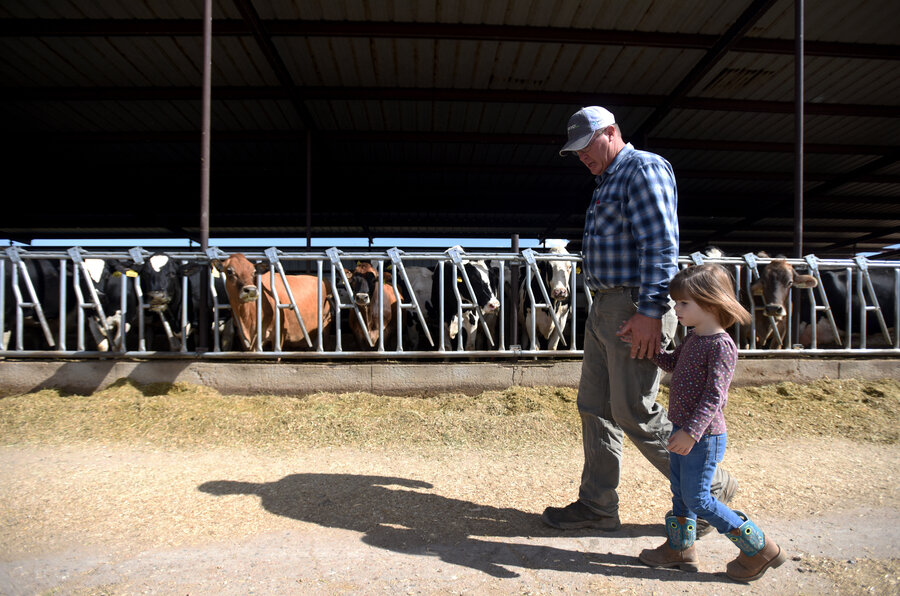Why dairy farmers dumped 43 million gallons of milk this year
Loading...
More than 43 million gallons of milk were dumped, lost, or discarded by dairy producers and handlers in the first eight months of 2016, according to a Wall Street Journal report based on US Department of Agriculture data.
Just two years after expanding global markets and high prices saw the dairy industry stepping up production, farmers are facing a crisis of oversupply. The 43 million gallons is well beyond the quantity of milk gone to waste in any of the past 16 years, the Journal reported, and as prices swoop downward, farmers aren’t producing any less.
“You do the exact same thing,” Carla Wardin, who runs a Michigan dairy farm with her husband, told the Journal back in May. “You milk more cows.”
Farmers and industry lobbyists are scrambling for unusual ways to put all that surplus milk to use. New partnerships brokered by industry marketing group Dairy Management, Inc., have seen more than a dozen fast food companies – including McDonald’s, Domino’s Pizza, and Taco Bell – slip dairy ingredients into their menu.
For instance, Taco Bell’s Quesalupa, a cheesy mash-up of a quesadilla and chalupa, advertised during last year’s Super Bowl and introduced that February, is a product of that partnership. And in September 2015, McDonald’s replaced the liquid margarine it once used for Egg McMuffins and other items on its menu with butter – a switch that could result in as much as 600 million more pounds of milk being used every year.
Another obvious way to alleviate the surplus is by making more butter and cheese, which can be stored away for years. In April, Bloomberg reported that cheese inventories were at the highest levels since 1984. More than half of that was American cheese, 2 percent was Swiss, and the rest? "Other," according to USDA record keepers.
The government has also tried to ease the strain. In July, more than 60 House and Senate legislators led by a bipartisan group from major dairy-producing states signed a letter to the USDA asking it to lend a hand to producers struggling with declining prices.
The following month, the USDA announced it would buy up $20 million worth of cheese, or 11 million pounds, from private inventories, to be donated to food pantries across the country. But that purchase was basically a symbolic one, University of Wisconsin dairy economist Mark Stephenson told Pennsylvania's Scranton Times-Tribune this month.
"The amount that you could purchase of cheese at $20 million is about equal to the amount of that we added to our supply of cheese stocks in the last month," he told the paper. "It's just bringing them back down to where they were the month before."
The reason for the decline in prices is partly the glut in supply itself, and partly a surge in dairy exports from the European Union. There's a geopolitical root: In response to sanctions enacted by the West, Russia banned most dairy products from the European Union in 2014. Faced with the sudden loss of one-third of its cheese exports and one-fourth of its butterfat shipments, EU producers shifted sales to markets where the US had traditionally done much of its business, according to the US Dairy Export Council.
On Tuesday, the USDA announced that it would follow its August purchase with another $20 million order this month.
"Short term, we're going to probably see just a small bump in pay prices of the farmers," Wisconsin Farmers Union president Darin Von Ruden told Wisconsin Public Radio. "But in the long term, it's not going to have a dramatic increase on prices for producers."






